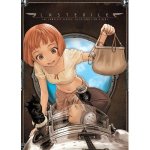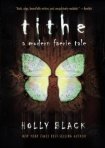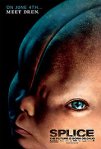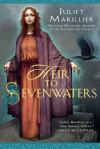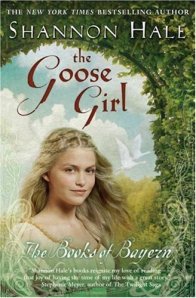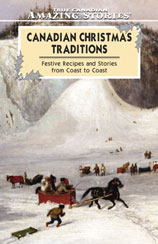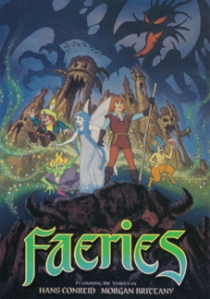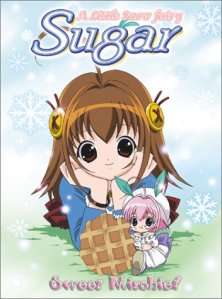Last Exile is a story about two orphans, Claus and Lavie, who make a living as couriers. In the land they live in, people move around in the sky more than they do water or land, and the two fly an aircraft known as a vanship. All is normal in their lives until one day, during a vanship race in their home town (think star wars), a foreign vanship cuts off their path and crashes into the forest below. Claus, the pilot, decides that they should go down to make sure the people in the vanship were all right. When they get there they see that the pilot has been shot, but is still alive, and there is a dead person in the back seat holding a small sleeping girl. The pilot tells them that an enemy faction, The Guild, is after this young girl and asks the two to see his mission through to the end and escort the girl to safety. The Guild is an advanced race of people who have superior technology and almost silently rule the people below them. Of course the pair accept the mission and take the girl. This leads the two to eventually come on board a ship called the Silvana and on that ship, they will face wars with others and ultimately battle The Guild's control over them by attempting to prevent their awakening of a powerful and unknown entity known as 'exile'.
The first half of this anime bored me to tears. I'd heard so many rave reviews I couldn't believe that it could possibly be as bad as I initially perceived it to be... so forced myself to watch episode after episode. The beginning is king of pointless and disorienting. We see Claus and Lavie living life as usual, doing a mission or two, fighting in a race, but there was nothing that really drew me into the plot or care about the characters until around the twelfth episode. The story up until that point was kind of like the middle of an anime... boring and just filling up space. And at that point the audience doesn't have enough emotional history with the characters to care. I was so bored I spent more of the time picking out character flaws. Lavie is completely useless for most of the series. This is actually stated in the show by one of the other characters. For a majority of the first half of the show all she does is whine and yell. She continues to do this in the second half, but not as much because she is not in as many episodes. I felt that they could have done so much more with her character, there was so much potential there.
The show was not all bad though. As I said, the second half was much better than the first and I would say that the ending makes up for the pain of having the watch the build up. The flashbacks helped, as did the actual purpose given to the character's existence. The war inspired many emotional and political problems for the characters, and the characters were a defined a little bit better for the viewer. The Guild reminded me of the blue giants in the animated film Fantastic Planet, for those who have seen the film, both in how they acted and how they treated the people. The end of the anime was the very best part for me. I don't know why exactly, but as I watched Claus and Lavie flying over that field with Claus' overtone and the music in the background, I got this nostalgic sort of feeling. Kind of like the feeling I get after watching a Miazaki film, a feeling of endless possibility... but I have no idea how as I don't think I liked the show that much to have developed such feelings about it's final moments. But it is as it is I suppose.
The animation in this anime is absolutely stunning. It is one of the most beautiful animes I've seen artistically speaking. In regards to the scenery anyway. One of the funny things about this anime is that even though the landscape is so well drawn.. for some reason the characters can look very amateurishly drawn at times. There will be a stunning scene with some sort of aircraft or landscape or room and is so amazing that it will have you sighing in awe, but two seconds later there will be a scene with one of the characters positioned awkwardly or drawn with an arm or leg too skinny. Just in general I feel that the artists put so much effort into the world the story takes place in that they sort of just drew the characters in last-minute like 'oh ya this story actually revolves around people... we should draw some'. Claus and Lavie we see the most of because the show is about them, and Claus I'm fine with, I feel that his look suits the artwork surrounding him. Lavie, on the other hand, I do not like one bit. There is so little detail in her features that her face is literally a circle with huge 'anime eyes' and a big mouth. While the other characters are drawn seriously, like the characters of a drama, Lavie is drawn like the heroine of a high school romantic comedy... you expect her to go chibi any second. And since this is not a romantic comedy, and Lavie does not even serve as a comic relief in this story, her look is completely out of place and always takes me out of the whimsical mood the scenery has so beautifully created for me. Most of the other characters could also be drawn better, but Lavie is where they so obviously slacked or guessed wrong... I'm not sure which. And her haircut doesn't help.
I have mixed feelings about the anime, but for each negative point I have, there is a positive one to combat it. Overall I would say that it is indeed worth the watch, and you will probably enjoy it immensely at some point. The question is how much are you willing to put up with to find what you might intensely like?
